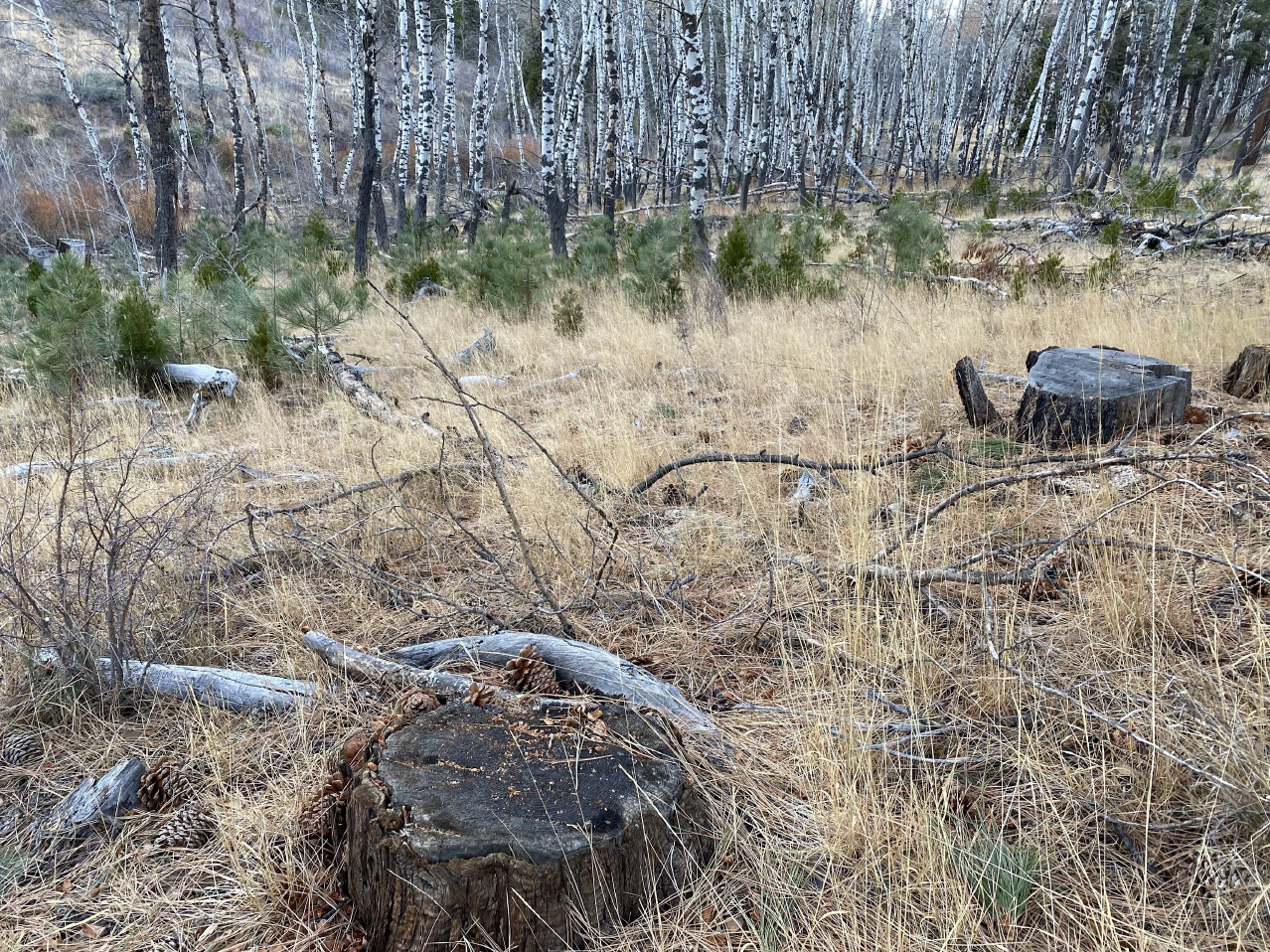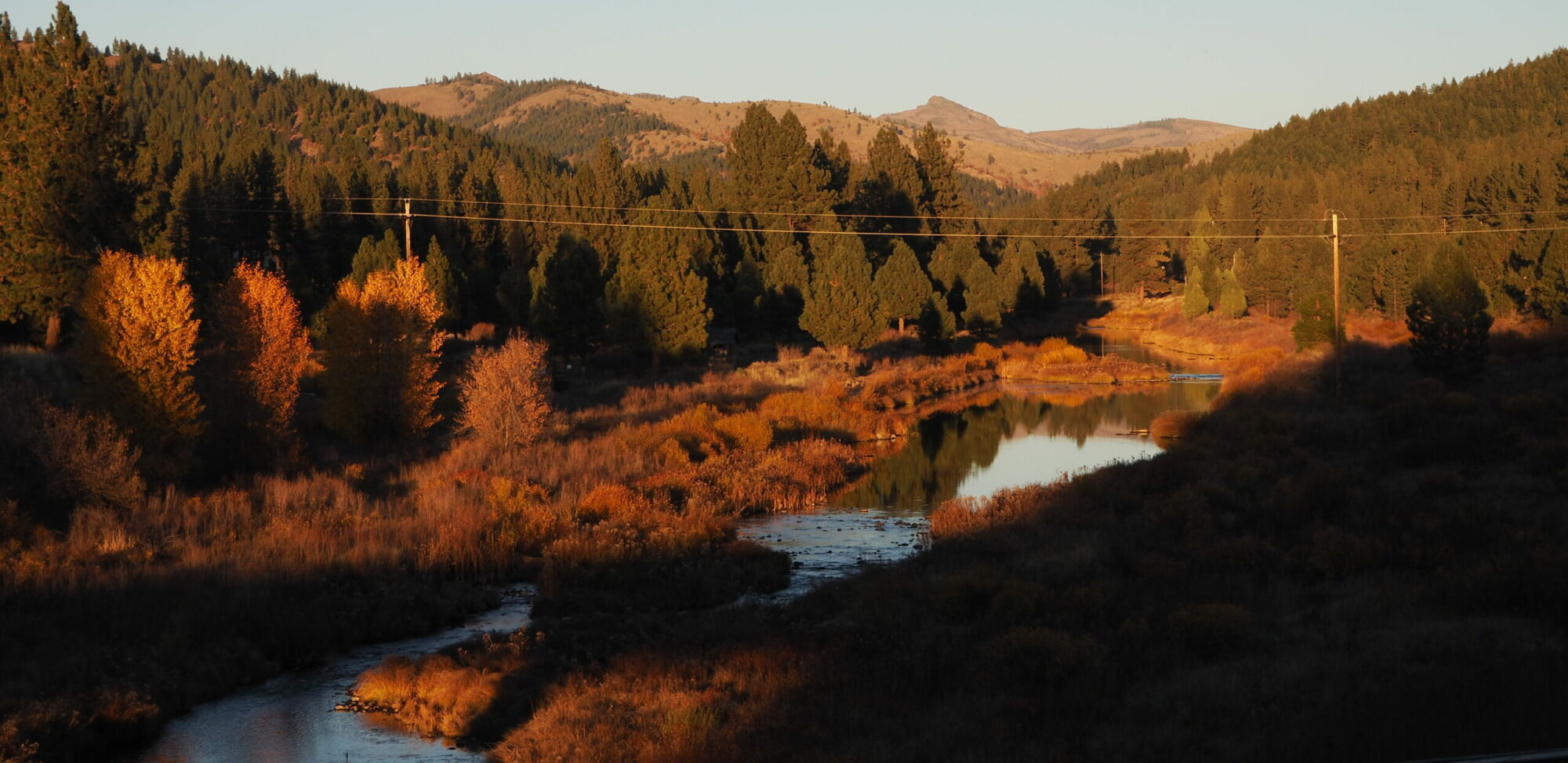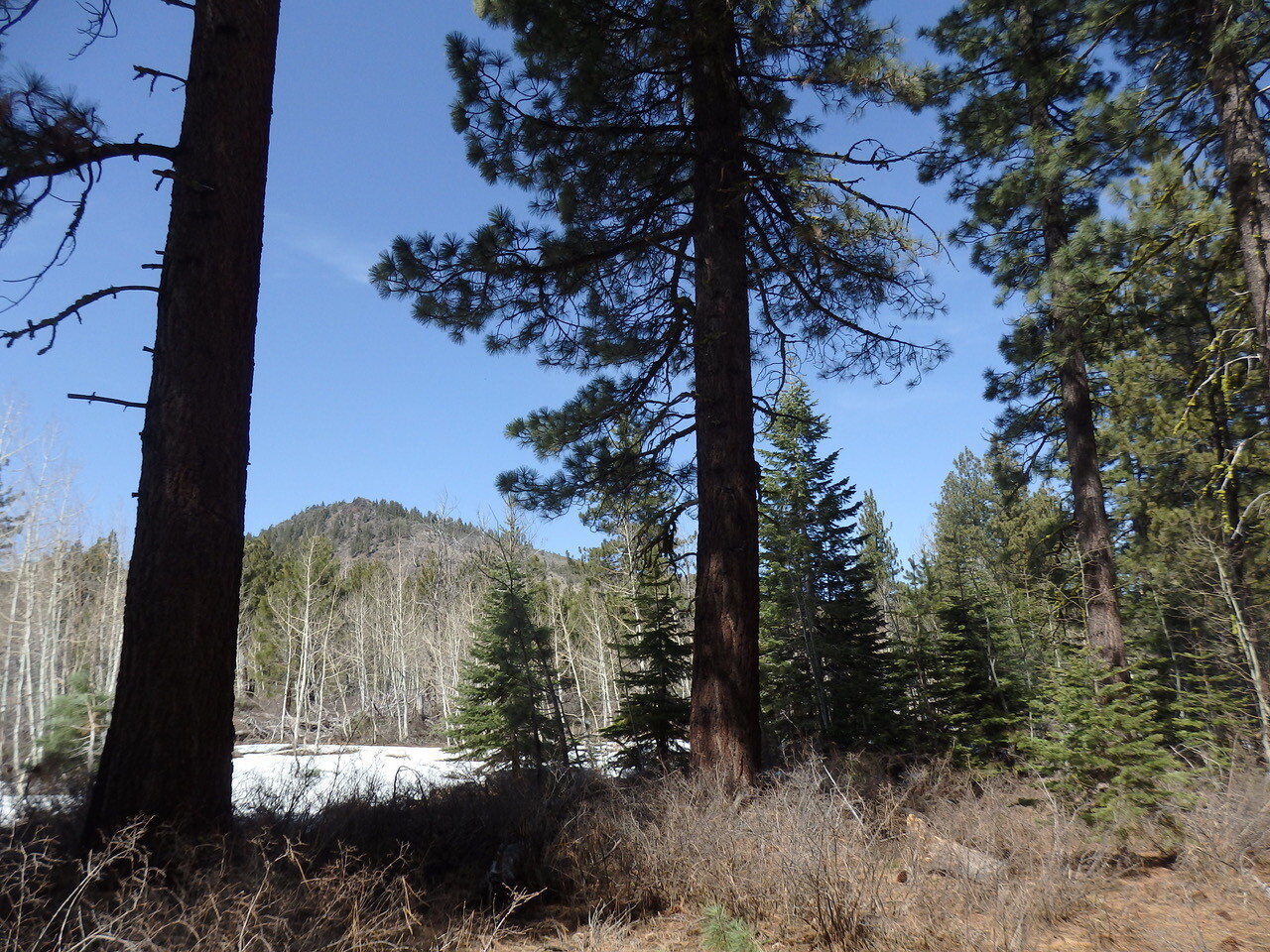
If you’ve been on the Lake Davis Trail recently, you probably noticed blue markings on nearly all the trees along the Trail- a planned 90% clearcut in an area that really only needs a light under-burn. On thousands of acres around Lake Davis, the Forest Service wants to come in with heavy equipment and cut down 90% of the forest canopy— way above what even the Forest Service’s own guides instruct.
These trees were marked before the project was even scoped or environmental assessment completed, another case of the Forest Service treating public input as just a formality. This is also a waste of taxpayer dollars when marks have to be undone when plans change.
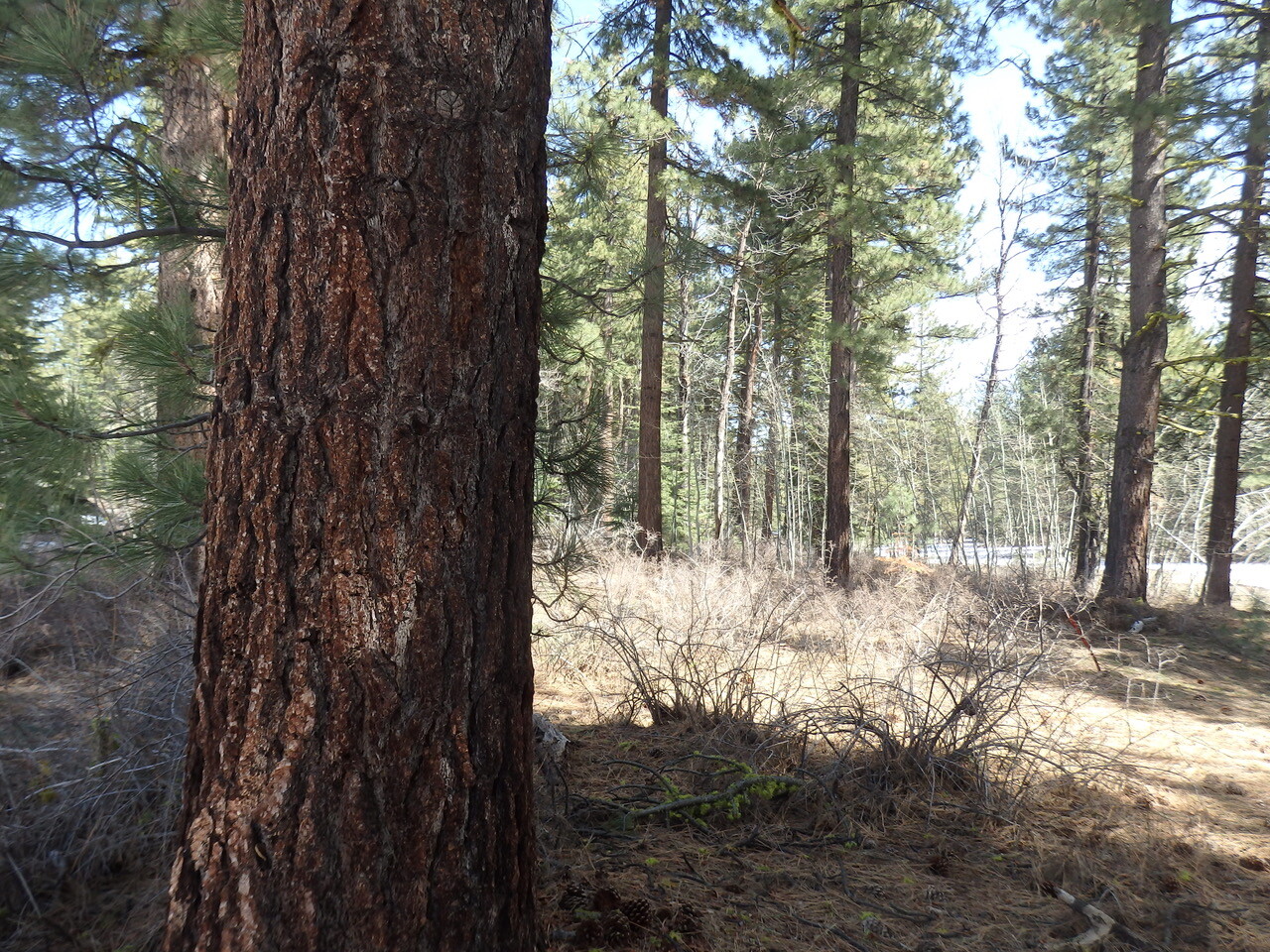
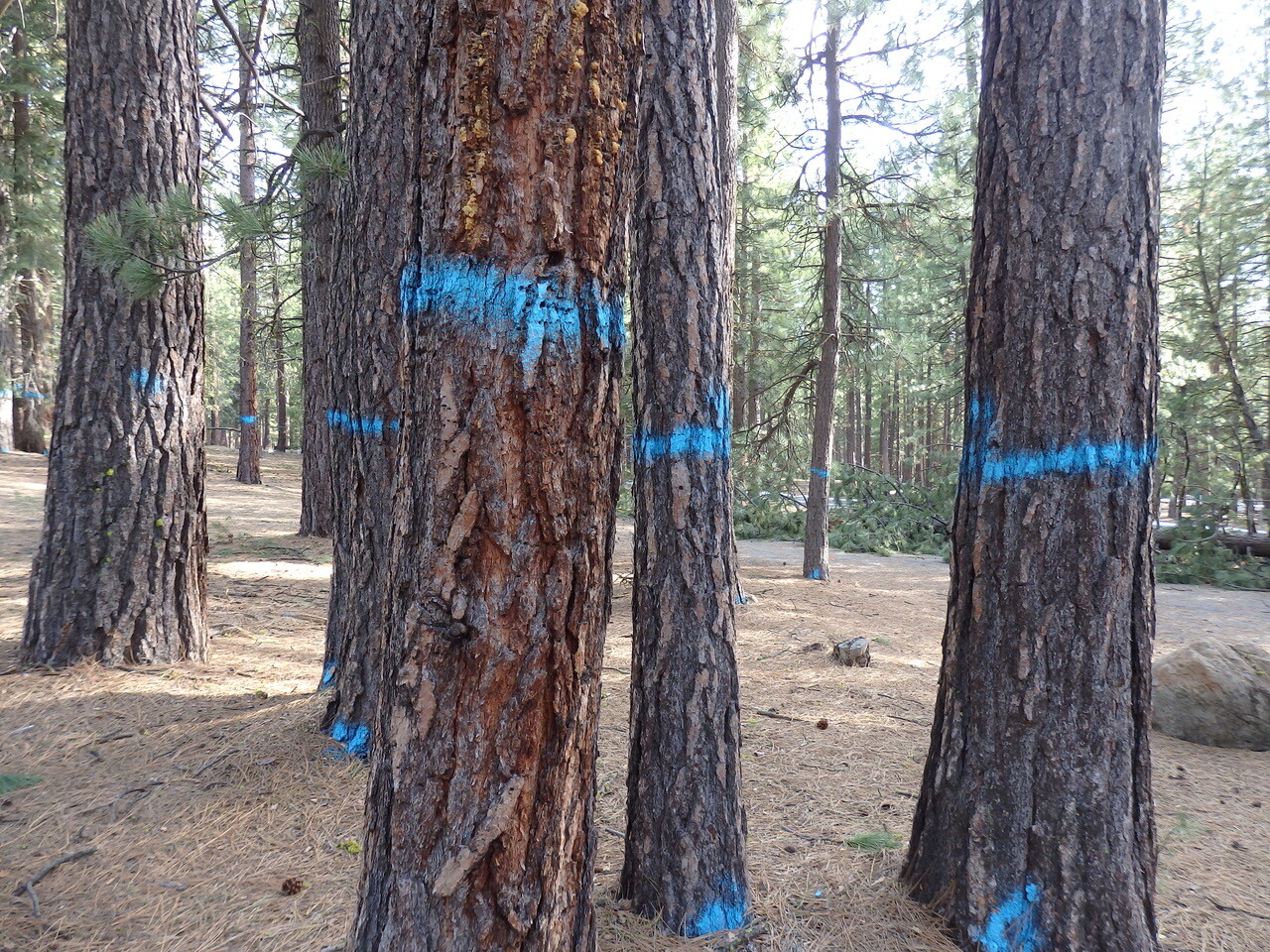
Logging reduces fuel, but it also exposes the ground to more drying sun and wind, compacts soils, and often makes forests drier and more flammable.
The Mapes Crocker project includes plans to cut one of the largest mature forests near Portola— the “Crocker Grove”— in the name of “Aspen Restoration.” If you look at a satellite map of Portola, Crocker Grove is the dense green patch just north of town.
We need these older forests to retain moisture, store carbon and resist fire. The Forest Service is proposing to cut nearly all conifers- even very old ones- within 150 feet of any aspen stem. Other “aspen restorations” have resulted in a dry wasteland, where thickets of small trees sprout up after the disturbance and become kindling for the next megafire.
This harms Aspens and increases fire risk for Portola. Instead of helping towns become more defensible, the Forest Service is making wildfires worse by cutting large fire resilient trees, damaging soils, causing disturbed conditions where dense thickets of small flammable trees sprout, and pulling off industrial logging as “thinning” while neglecting under-burn plans.
The fire break created last summer to try and block the Dixie from burning Portola was not tested and would not have been necessary had the Forest Service carried out under-burns in this area that were committed to.
Feather River Action! is calling for an under-burn/ hand-thin-only option as an alternative to industrial devastation in the Crocker-Mapes project area. We are also planning a hike and picnic to the Crocker Grove on a weekend in June. The date will be announced on our website.
The Crocker Grove is a local jewel— one of the last older forests in the area — but it is currently under threat from a large tree clearcut plan dressed up as an aspen “restoration” project.
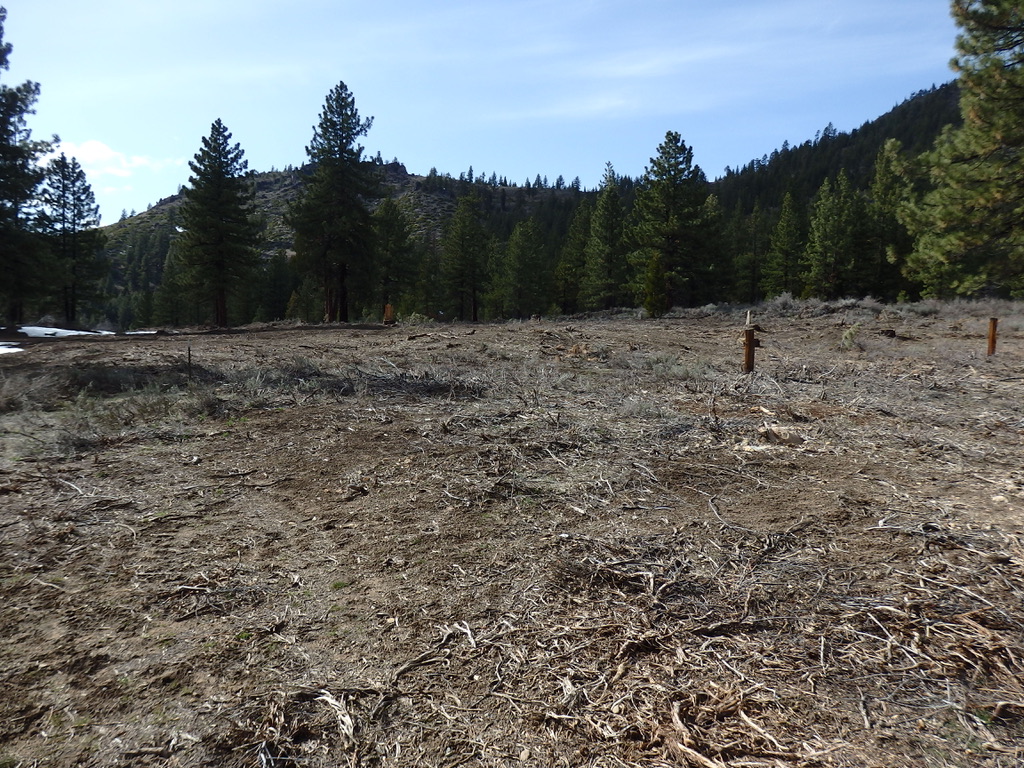
Contact the Forest Service now and urge them to adopt a hand thin/ underburn alternative for the whole mapes crocker area and leave ALL large conifers– including around aspens– in place.
E-mail Keli Ward of the Forest Service at keli.ward@usda.gov
We are planning a free public tour of the area in the near future, so stay tuned to our website. Details to come.
“Aspen restoration” areas marked in purple hash- old growth trees would be authorized to be taken in these areas:
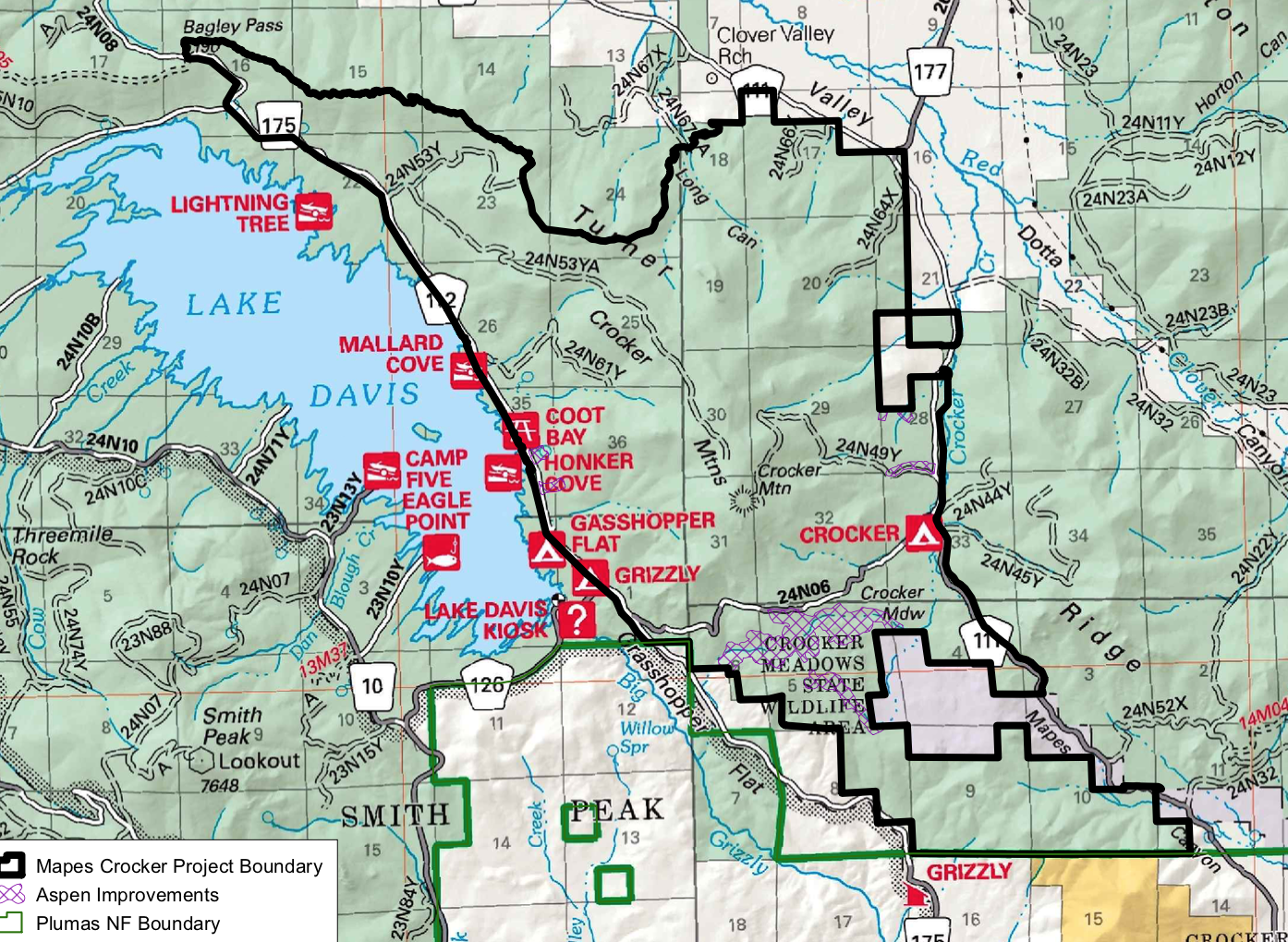
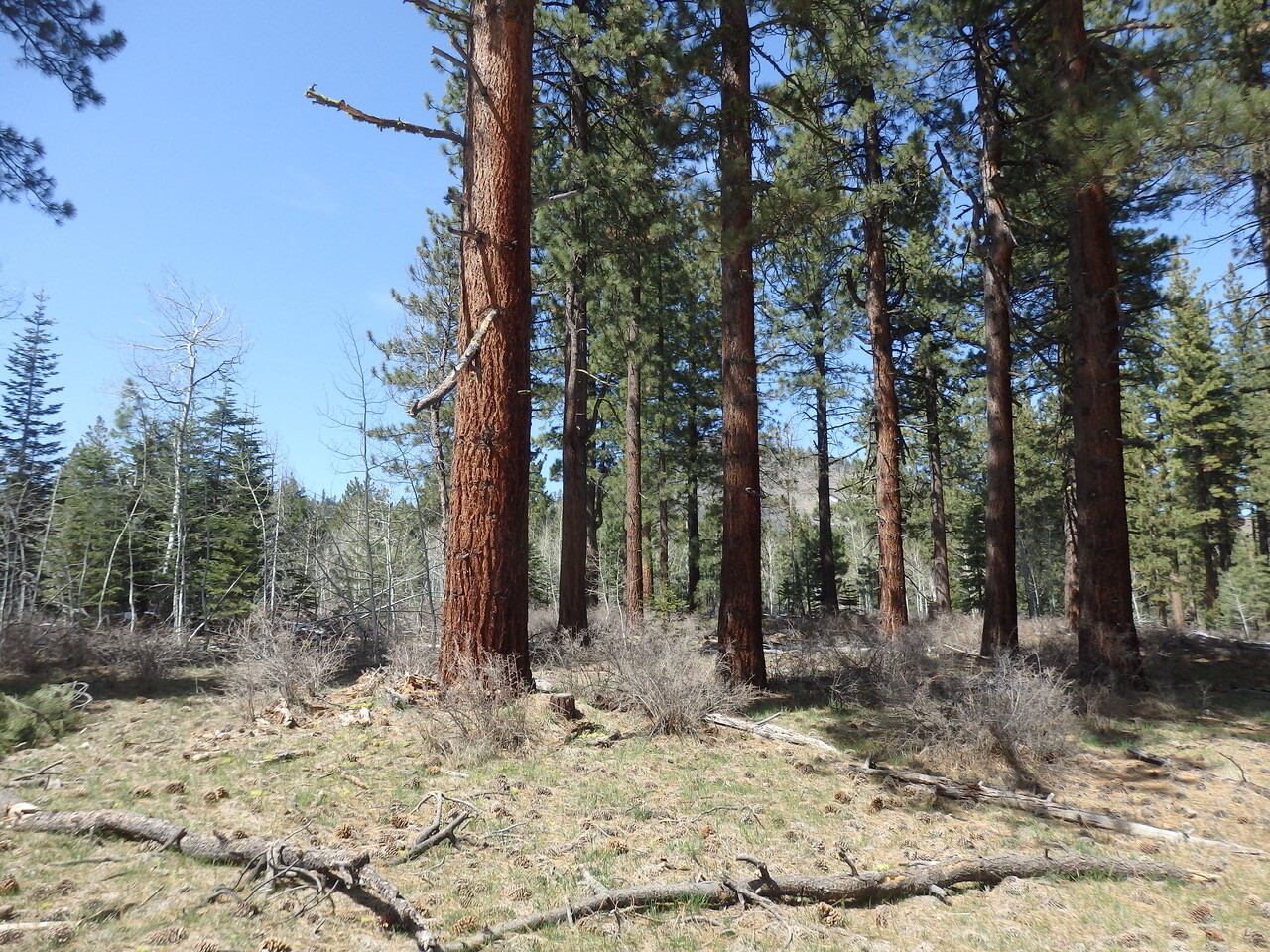
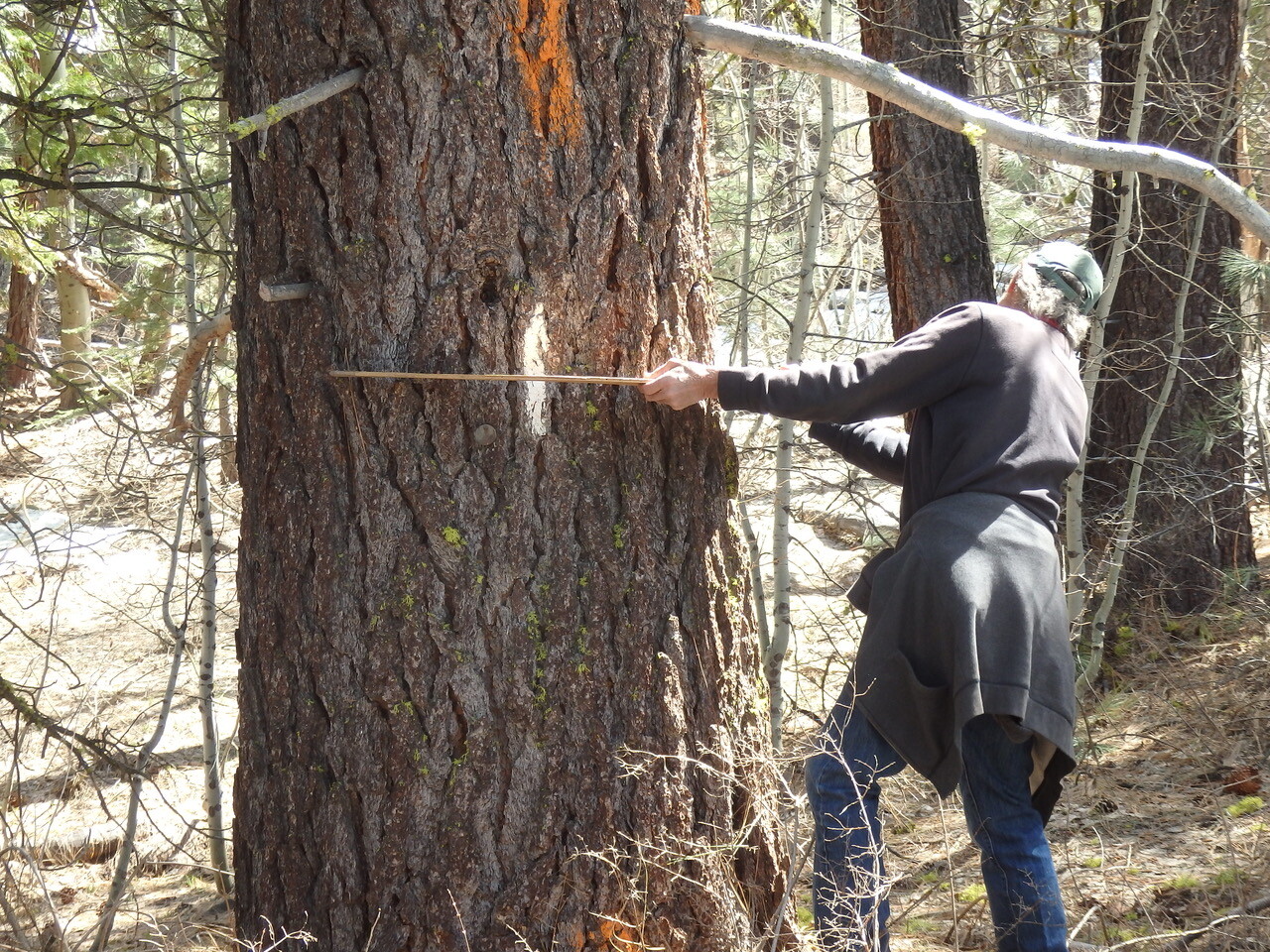
These aspens and conifers have coexisted for millions of years- if anything the large trees are providing a microclimate necessary for aspen flourishing.
